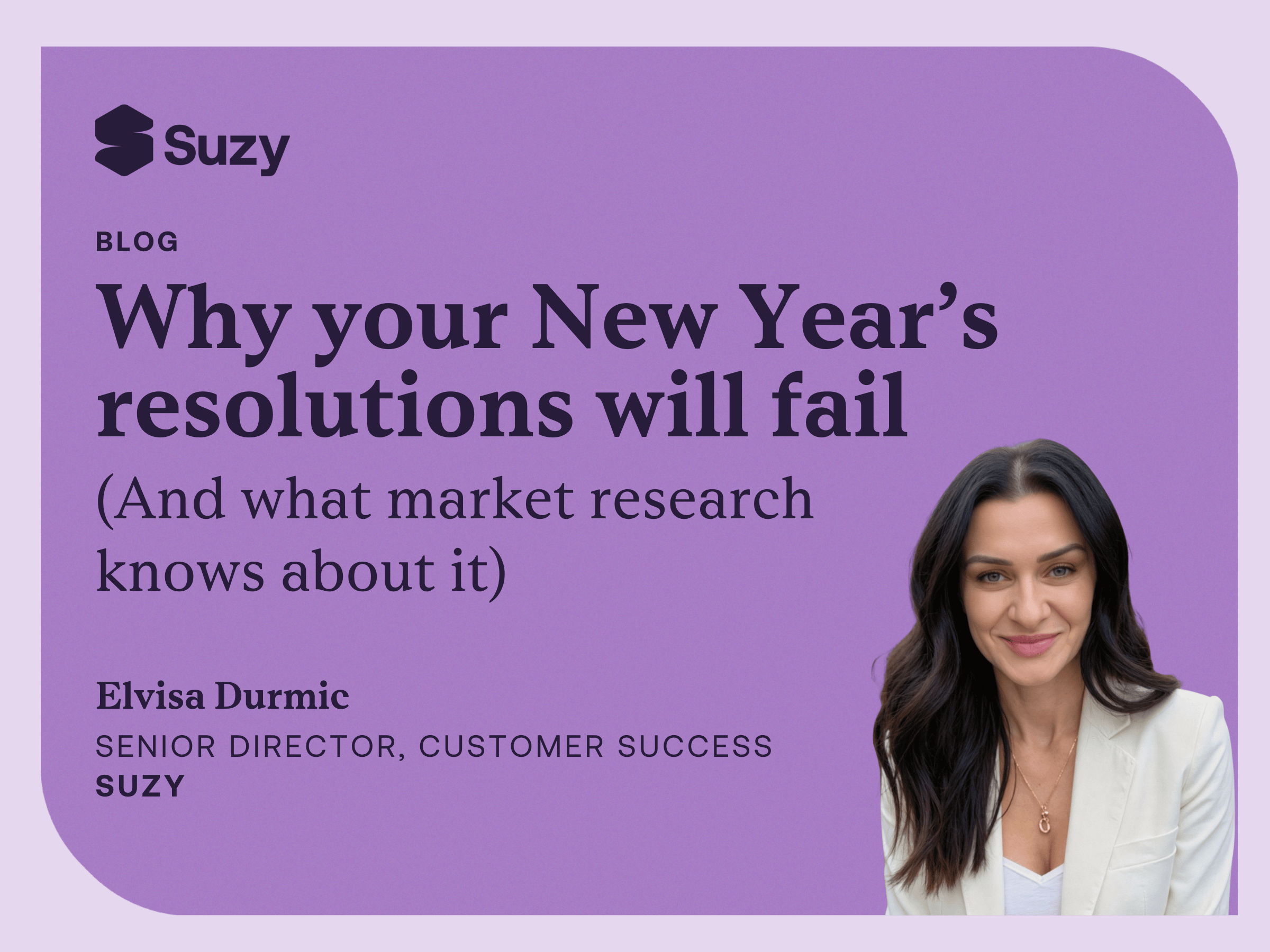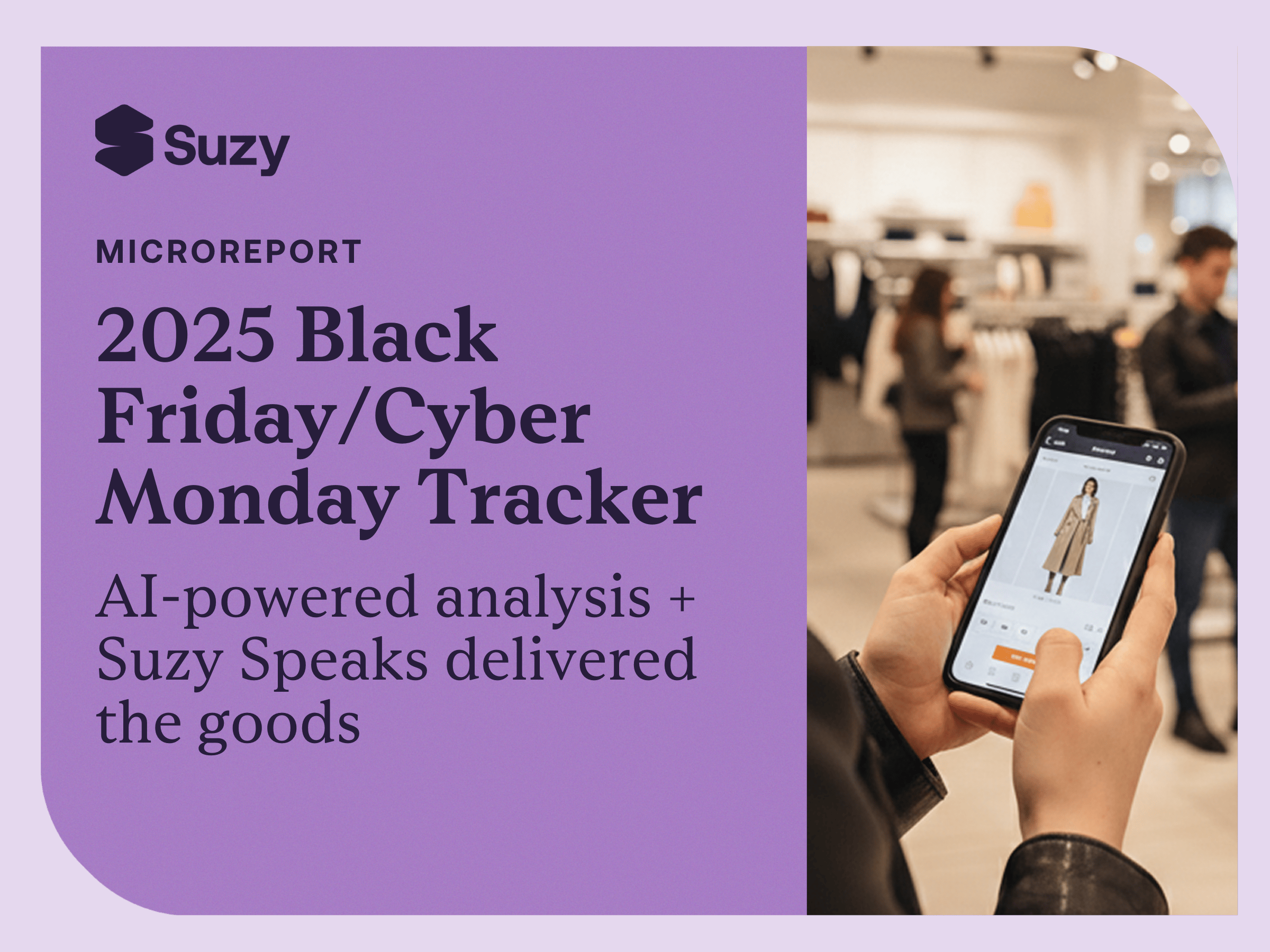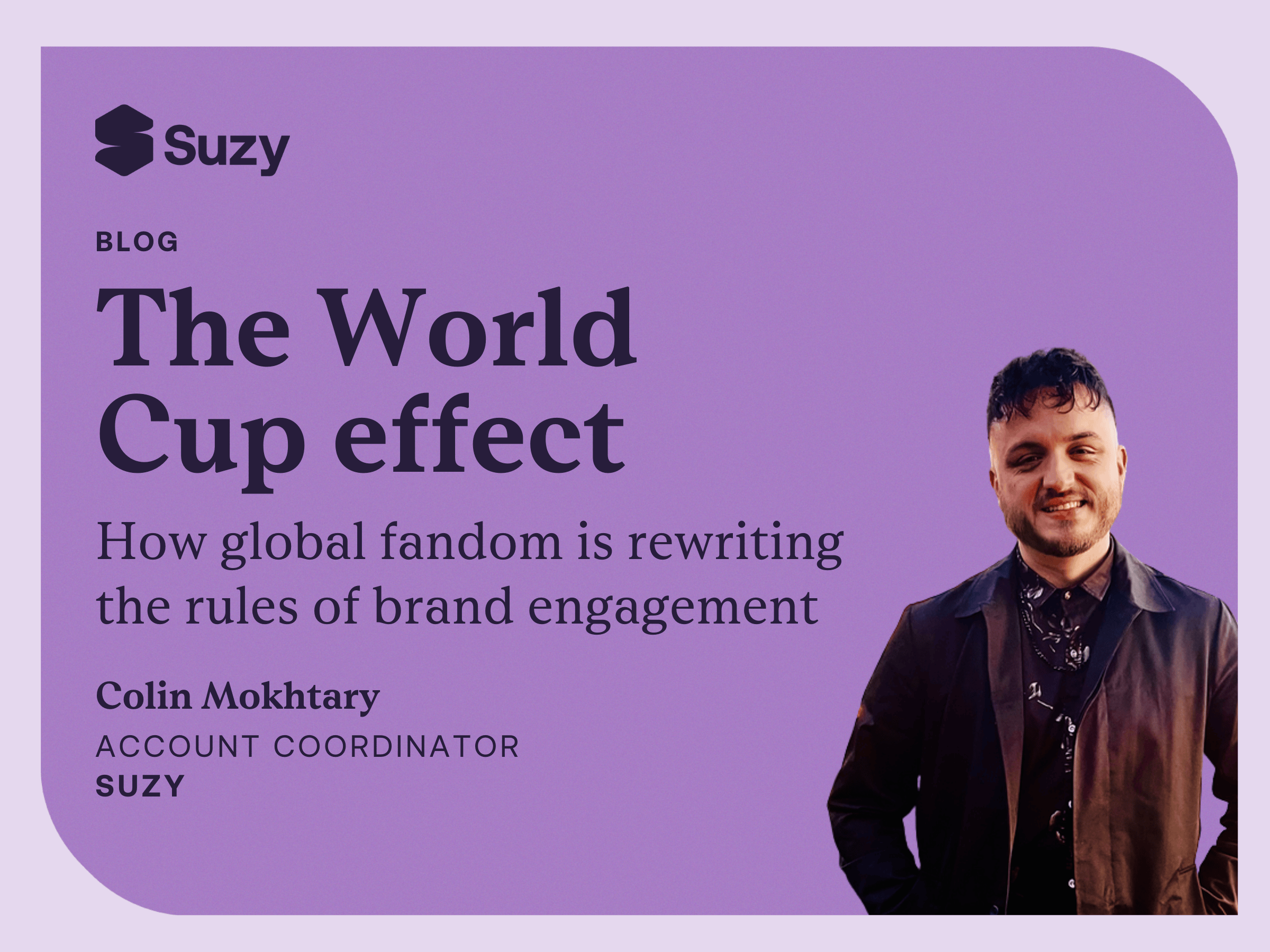Are you ready to unlock the power of mixed methods research to gain deeper insights and drive smarter decisions? Access the strategies you need to implement this effective approach.
In the ever-evolving landscape of market research, adopting a mixed method approach—combining quantitative and qualitative research—offers researchers a strategic edge. This methodology is not merely a combination of techniques; it’s a synergistic approach that leverages the strengths of both to deliver comprehensive insights. Suzy’s platform is uniquely positioned to enhance mixed method research by providing integrated tools and features that streamline and elevate this approach. Here’s how Suzy supports each of the core benefits of mixed methods research:
1. Holistic Understanding
Quantitative research provides measurable data, such as percentages, averages, and correlations, which help identify trends and patterns. Qualitative research, on the other hand, delves into the “why” behind those numbers, uncovering motivations, emotions, and deeper insights. Together, they paint a fuller picture of consumer behaviors and preferences.
Suzy’s Advantage: Suzy integrates asynchronous methods like surveys, TURF, MaxDiff, monadic testing, and video open-ends into a single platform. Suzy Live enables deeper exploration of themes identified in asynchronous quant studies, ensuring a comprehensive view of consumer behavior. This allows researchers to seamlessly switch between capturing large-scale data and digging into qualitative feedback from the same respondent pool.
2. Data Validation and Triangulation
Mixed methods strengthen research validity by cross-verifying findings. Quantitative data may highlight a trend—like a surge in demand for eco-friendly products—while qualitative insights explain the underlying consumer motivations, such as ethical concerns or social influences.
Suzy’s Advantage: With Suzy’s retargeting capabilities, researchers can revisit the same respondents across both quantitative and qualitative phases, ensuring consistency and richer triangulation. For example, follow-up IDIs with respondents who participated in a wave of a brand tracker can validate trends while bringing actionable nuances to light.
3. Flexibility Across Research Stages
Mixed methods can be used iteratively:
- Start with qualitative exploration (e.g., focus groups) to develop hypotheses.
- Test these hypotheses quantitatively (e.g., surveys) to validate findings.
- Use follow-up qualitative research (e.g., IDIs) to refine strategies further.
Suzy’s Advantage: Suzy’s platform allows for iterative research with features like saved audiences and real-time insights. For example, you can screen respondents for a survey and then immediately re-engage qualified participants for Suzy Live interviews to refine findings or explore unexpected results.
4. Enhanced Stakeholder Confidence
Mixed methods yield insights that are not only statistically sound but also resonate on a human level. Quantitative data shows trends that appeal to analytical thinkers, while qualitative narratives engage stakeholders who value customer-centric storytelling.
Suzy’s Advantage: With AI-powered tools like heatmapping, open-end analysis, and Suzy Live project and interview summaries, Suzy enables researchers to create compelling narratives that combine numbers with vivid consumer voices. These narratives can be brought to life with Showreels, allowing insights to be presented in an engaging and concise format that resonates and fosters buy-in from C-suite stakeholders and retailers alike.
5. Application to Diverse Research Needs
Whether it’s foundational research, innovation testing, or campaign evaluation, mixed methods offer unmatched versatility. Quantitative research can be enhanced with the qualitative voice of the consumer, and qualitative exploration and nuance can be validated with quantitative measurement.
Suzy’s Advantage: Suzy’s multi-modal platform supports a wide array of research methodologies. From monadic concept testing to qualitative IDIs and focus groups, researchers can address everything from foundational research, like attitudes and usage, to campaign and concept testing, to brand health tracking--all within one ecosystem. This consolidated approach drives efficiency and consistency for brands’ research.
Case Study: Home improvement retailer’s validation of a branded mobile wallet
Challenge:
A large home improvement retailer planned to introduce a branded mobile wallet offering features like storing payment methods, contactless transactions, and a rewards program. To ensure a successful launch, the team needed to assess consumer perceptions, relevance, feature preferences, and the potential business benefits of the solution.
Solution:
The retailer partnered with Suzy to implement a multi-phased, multi-solution research approach:
- Quantitative Survey: Gathered initial consumer insights and preferences.
- MaxDiff Analysis: Identified the most appealing mobile wallet features.
- Qualitative In-Depth Interviews (IDIs): Explored nuanced behaviors and expectations.
- Additional Quantitative Analysis: Refined and validated findings.
Suzy effectively engaged a hard-to-reach audience of Pros and Consumers, delivering insights within a tight timeline.
Outcome:
The research confirmed strong consumer interest in the mobile wallet concept, providing the retailer with the confidence to move forward. Key findings recommended the inclusion of distinct, value-adding features to differentiate the wallet from competitors. Buoyed by the overwhelmingly positive feedback, the retailer plans to use Suzy's expertise for ongoing user testing to refine and validate the product before its market launch.
Key Results:
- Enhanced Customer Loyalty: The inclusion of rewards and incentives, highlighted as a crucial feature, can strengthen customer loyalty by motivating repeated purchases and engagement.
- Increased Sales Frequency: By offering seamless online and in-store payment options, the mobile wallet is expected to increase both shopping frequency and total sales volume.
- Competitive Differentiation: Introducing unique and value-adding features identified through MaxDiff analysis can help the retailer stand out in the market.
- Improved Customer Experience: Features like contactless transactions and integrated rewards programs enhance convenience and security, leading to a more satisfying shopping experience.
- Broadened Customer Base: Engaging tech-savvy and rewards-conscious shoppers could attract new demographics to the retailer.
- Data-Driven Decisions: Ongoing user testing and real-time insights into consumer preferences will enable the company to iteratively optimize the wallet, maintaining its relevance and effectiveness.
Conclusion
The power of a mixed method approach lies in its ability to combine the precision of numbers with the depth of human experiences. Suzy’s platform maximizes these benefits, offering researchers integrated solutions to conduct seamless, efficient, and impactful mixed method research. By embracing this approach, researchers are not just gathering data—they’re building a foundation for strategic growth and innovation.
.webp)







